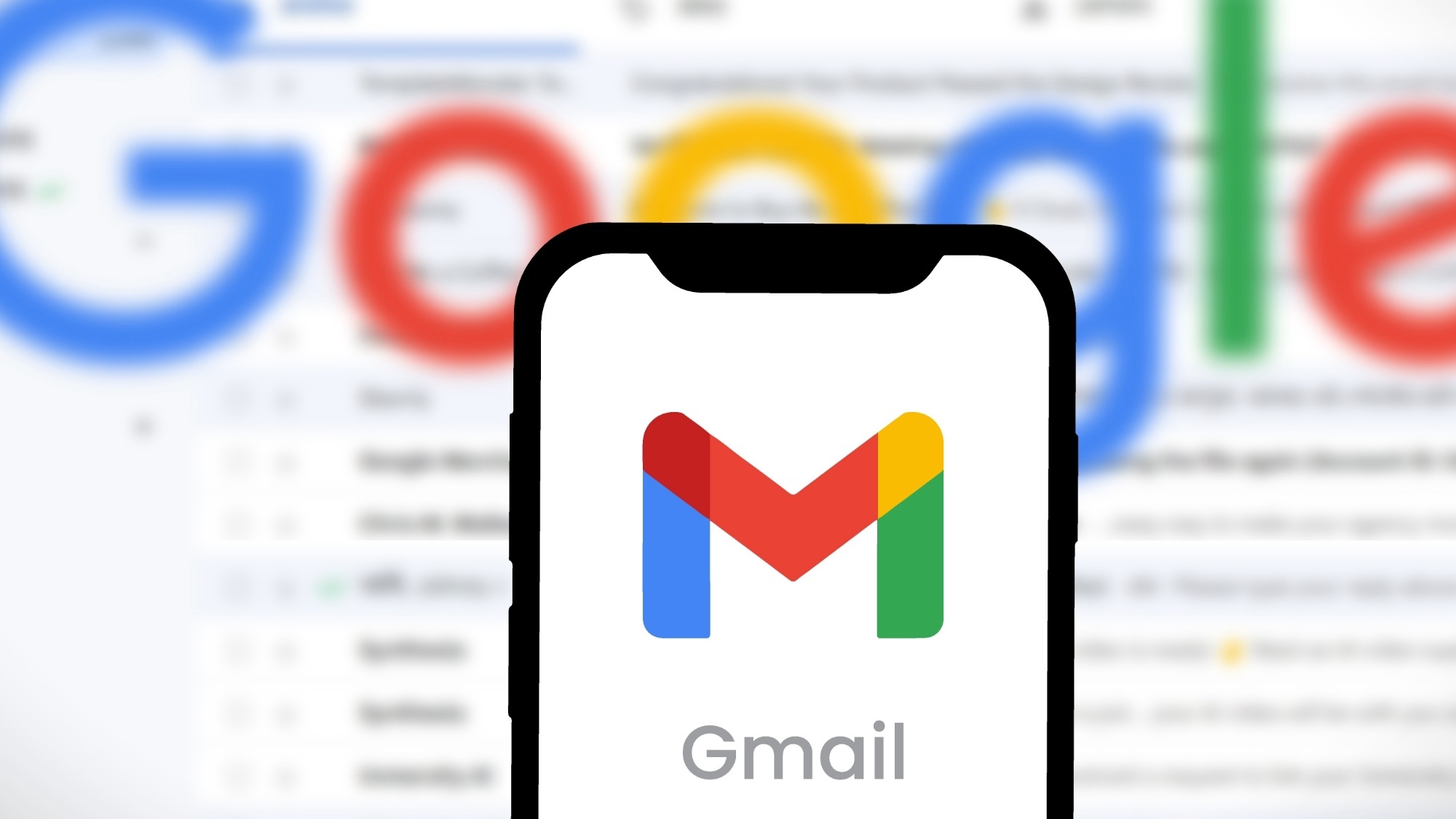I tried astrophotography on my OnePlus 12 to shoot galaxies, nebulas, and star clusters — these were my best captures
Great results in Night Mode without the need for long exposures
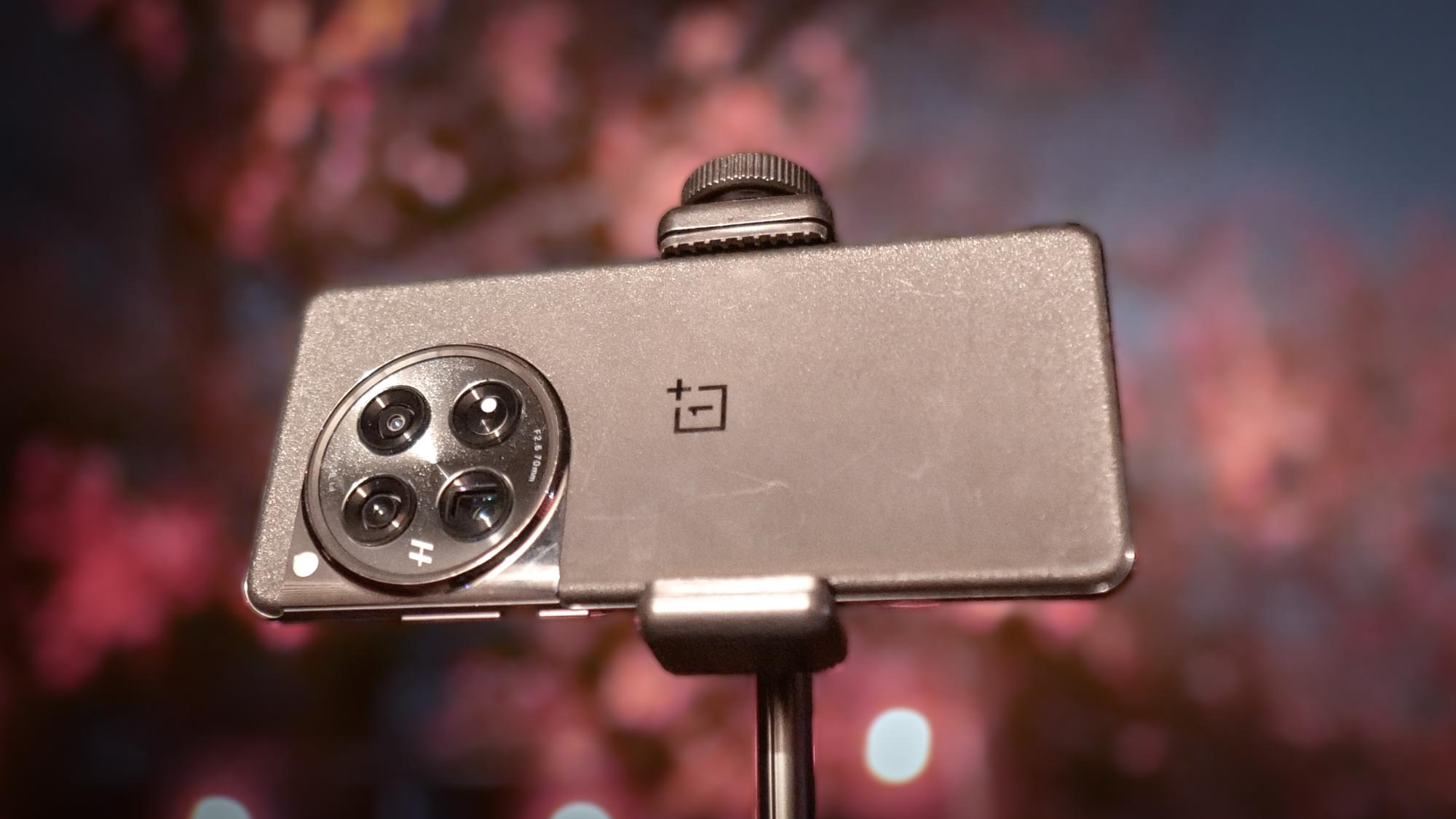
I know a OnePlus flagship successor is on the horizon. But until the OnePlus 13 is official outside of China, the best thing the company has to offer against the competition for this holiday season remains the OnePlus 12. I’ve recently spent time with the value flagship model in my 200 photo shootout with the OnePlus 12 vs. iPhone 16 Pro Max, so I know very well what its cameras are capable of.
Since fall is my favorite season of the year, I thought I’d put the OnePlus 12’s astrophotography powers to the test. One of my biggest, ongoing criticisms about OnePlus phones in general is that they often trail the competition when it comes to low light photography, falling behind what Google, Samsung and Apple offer with their flagship models. Even with that limitation, the OnePlus 12 is still one of the best phones you can buy.
Yet, astrophotography is a totally different form of photography because it’s more than just performing a long exposure. I’ve already put the iPhone 16 Pro Max, Galaxy S24 Ultra, and Pixel 9 Pro XL through my astrophotography test, so I’m eager to share with you my favorite images of galaxies, nebulas, star clusters, and other deep space objects from the OnePlus 12.
OnePlus 12 astrophotography: What you need to know
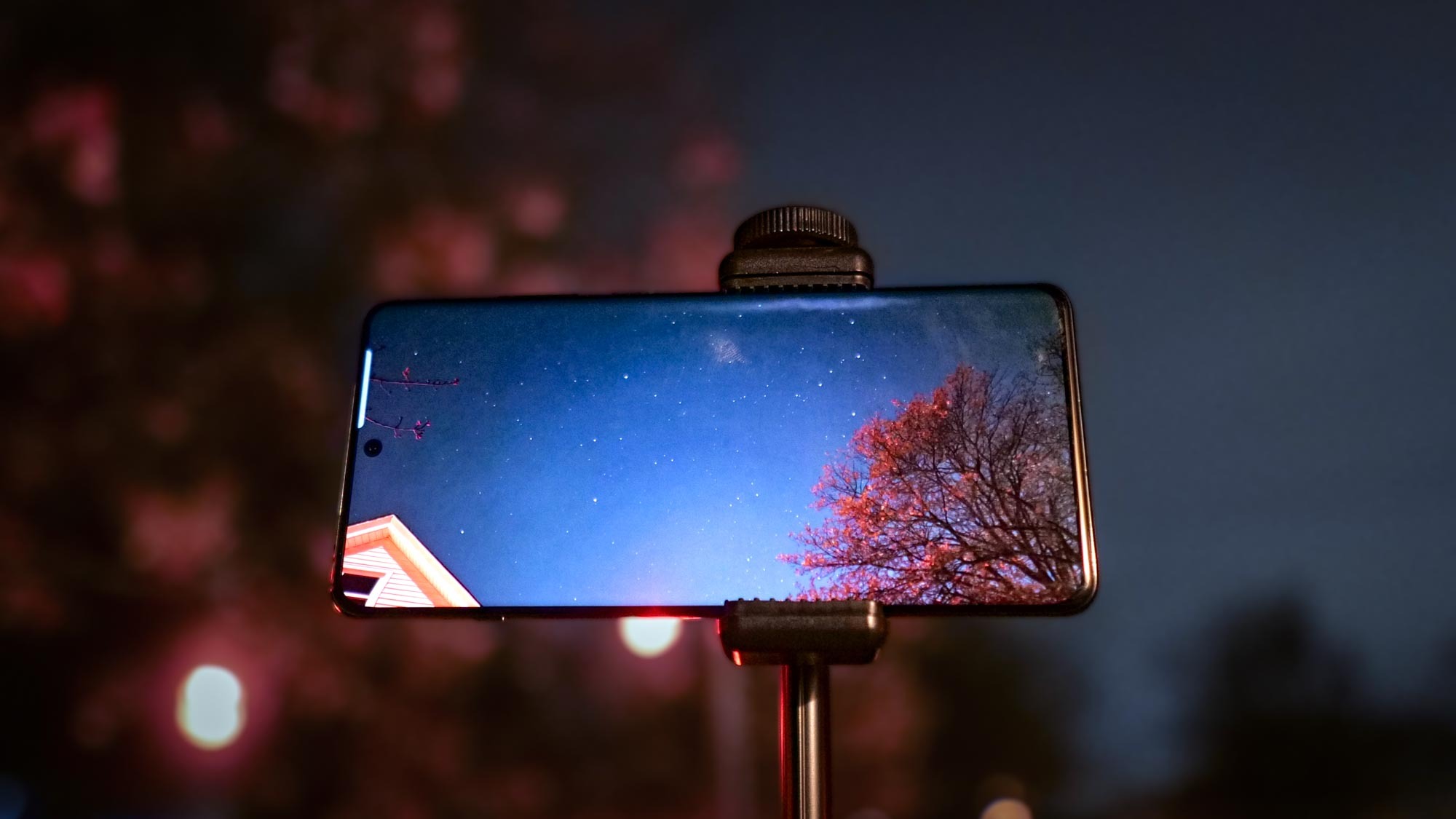
Just like all of my phone astrophotography sessions, I kept the OnePlus 12 as still as possible to eliminate any shake that could ruin the shot. I strapped the device to a phone holder connected to a tripod. Since astrophotography is a form of long exposure photography, your phone needs to be still throughout the shot to gather as much light as possible for the images to come out sharp.
Secondly, I placed the OnePlus 12 into its dedicated night mode with tripod mode enabled to get the longest possible shutter speed. I also set a 3-second timer so that I didn't inadvertently introduce any shake to the phone after pressing on the on-screen shutter button. And since my vision’s not the best, I also used a pair of night vision binoculars to help me determine the locations of the targets I want to capture.
The last thing you should know is that I also shot images with both the 50MP main and 64MP telephoto cameras to get a variety of compositions. I do enjoy that the 3x optical zoom of the 64MP telephoto camera lets me get closer, but I refrained from using the OnePlus 12's maximum 120x zoom for astrophotography because I found it nearly impossible to position on my targets.
In the galleries below, I'm also including similar captures I've taken of some of the targets with other phones and smart telescopes I've use, so you can judge for yourself how the OnePlus 12 performs with astrophotography.
Sign up to get the BEST of Tom's Guide direct to your inbox.
Get instant access to breaking news, the hottest reviews, great deals and helpful tips.
Star cluster: M45 The Pleiades
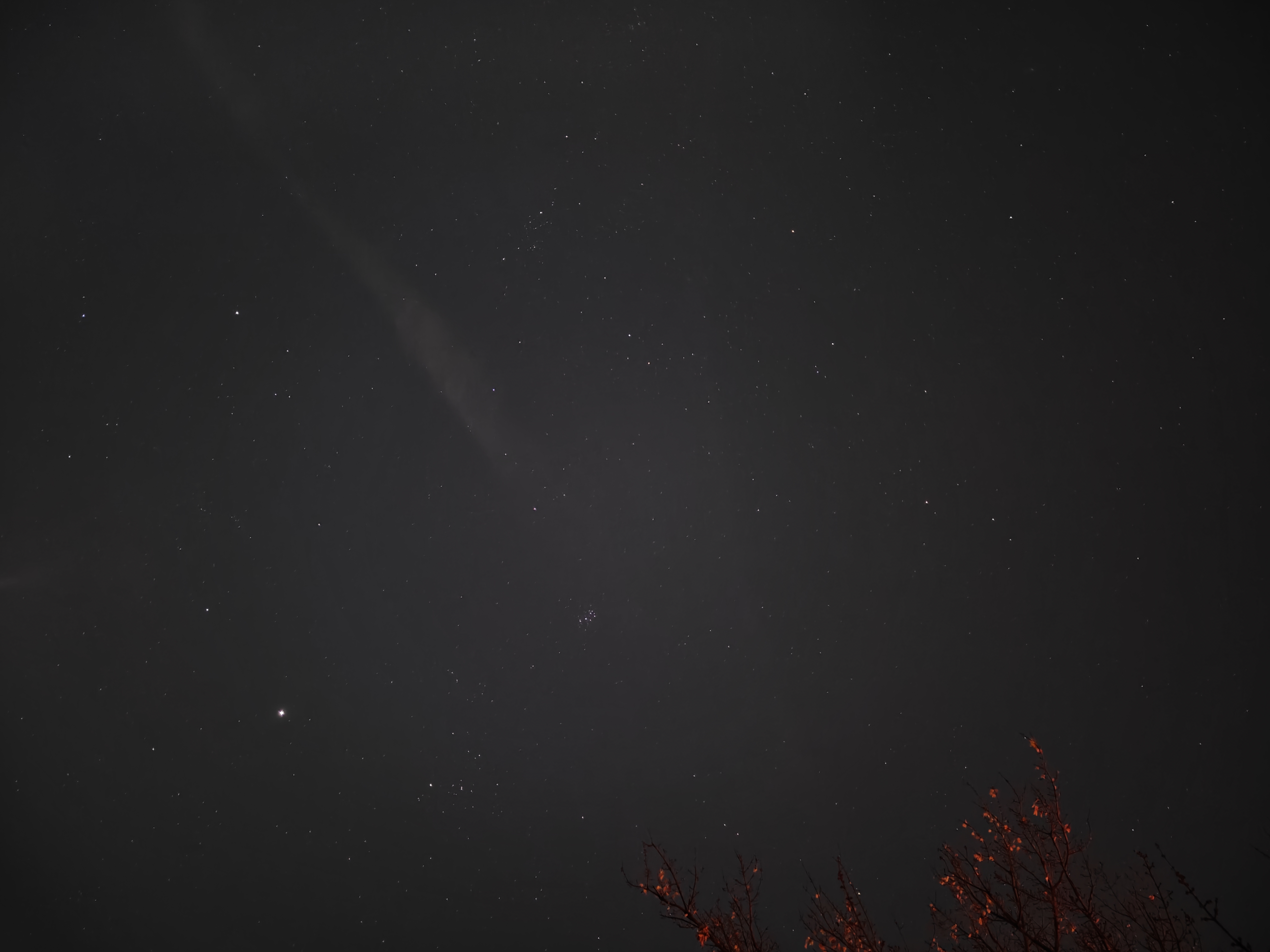
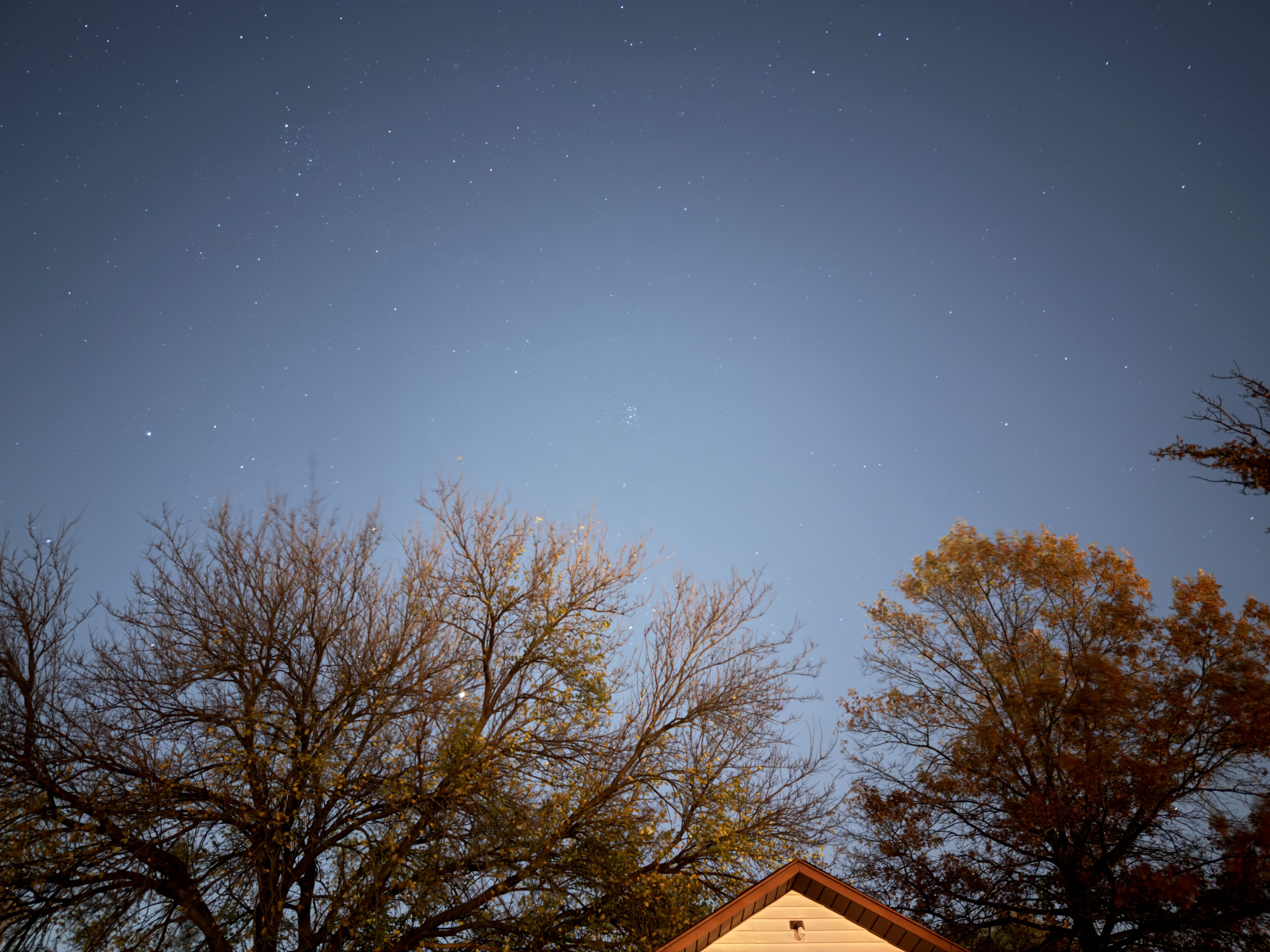
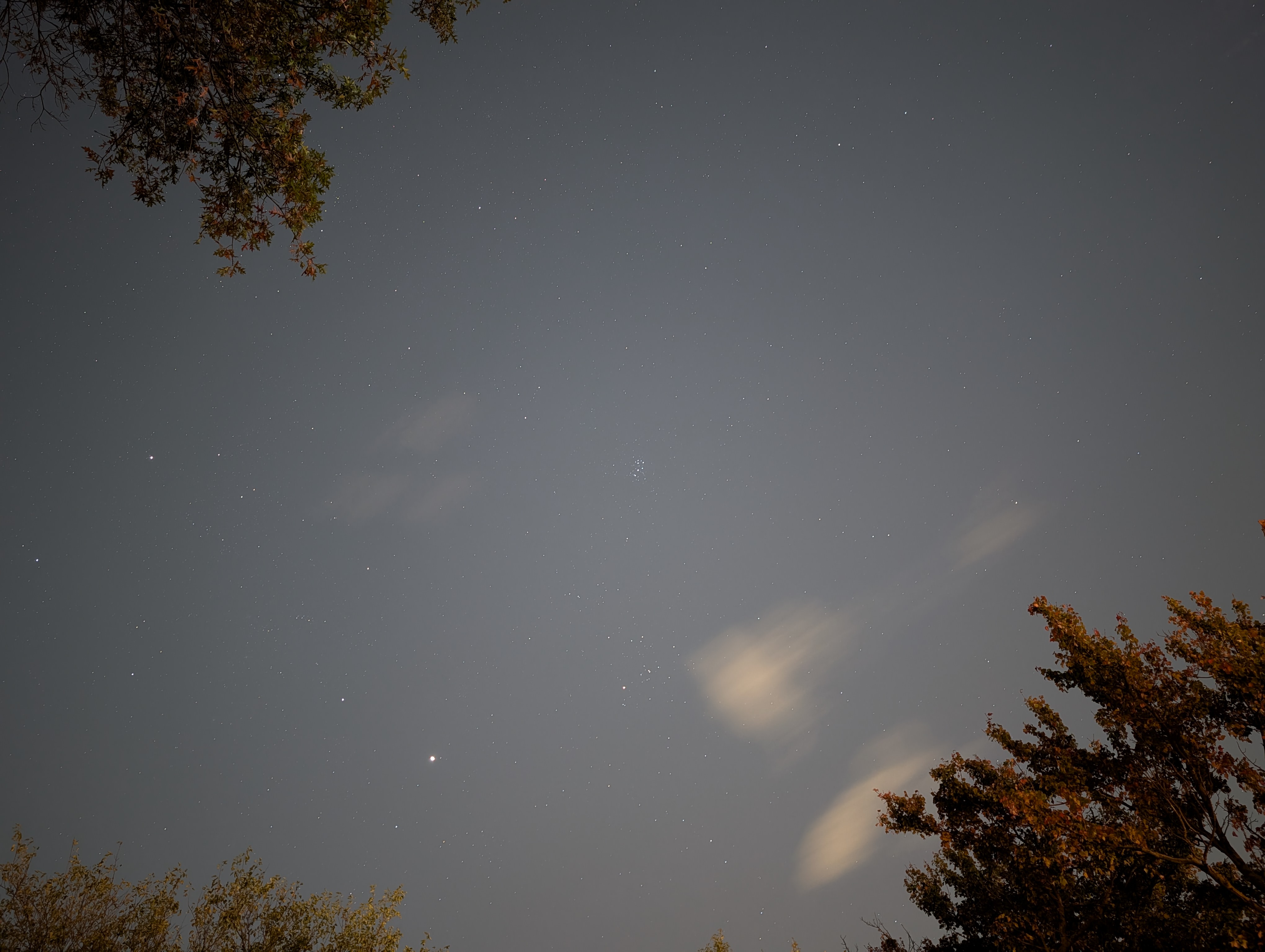
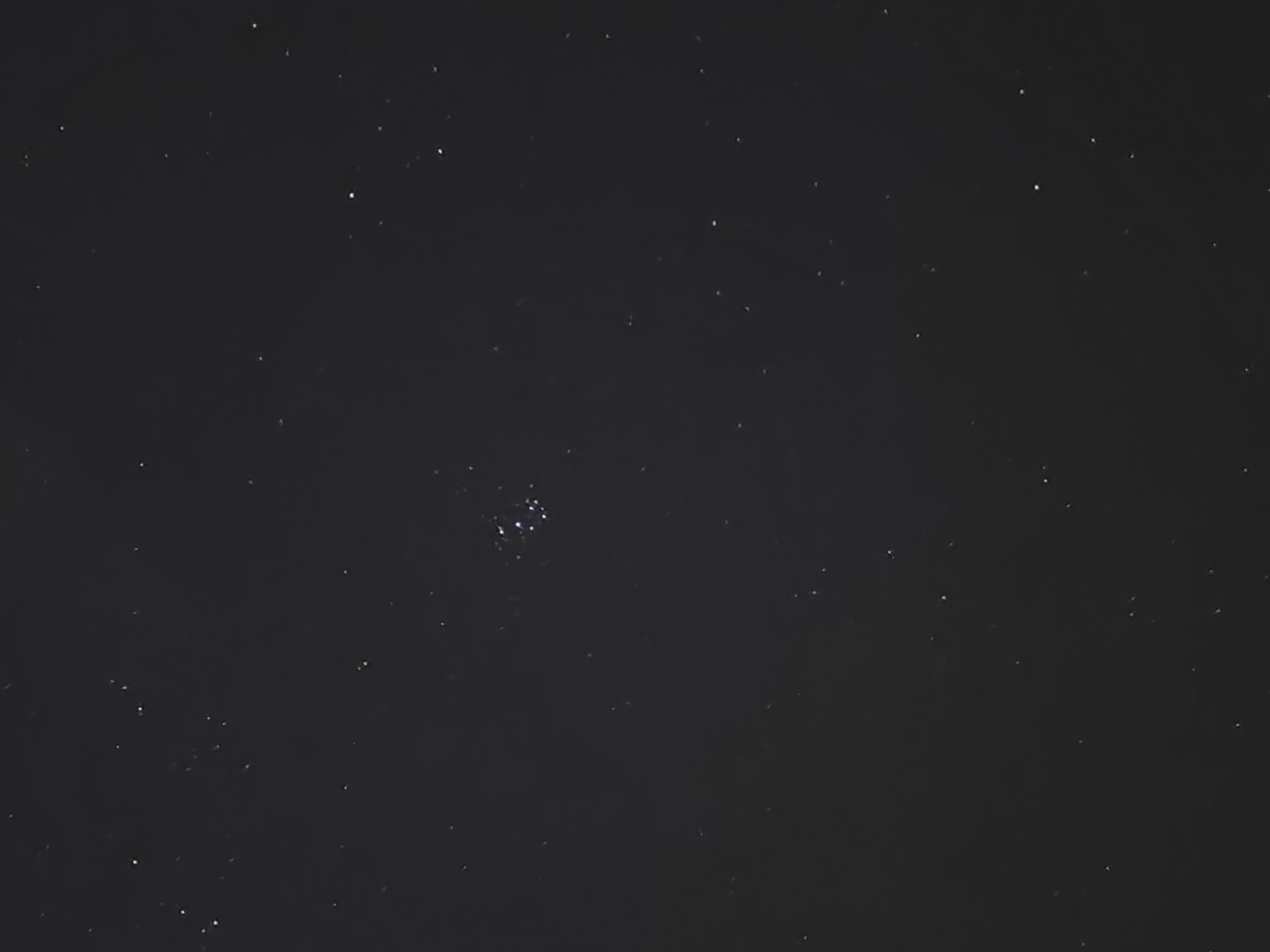
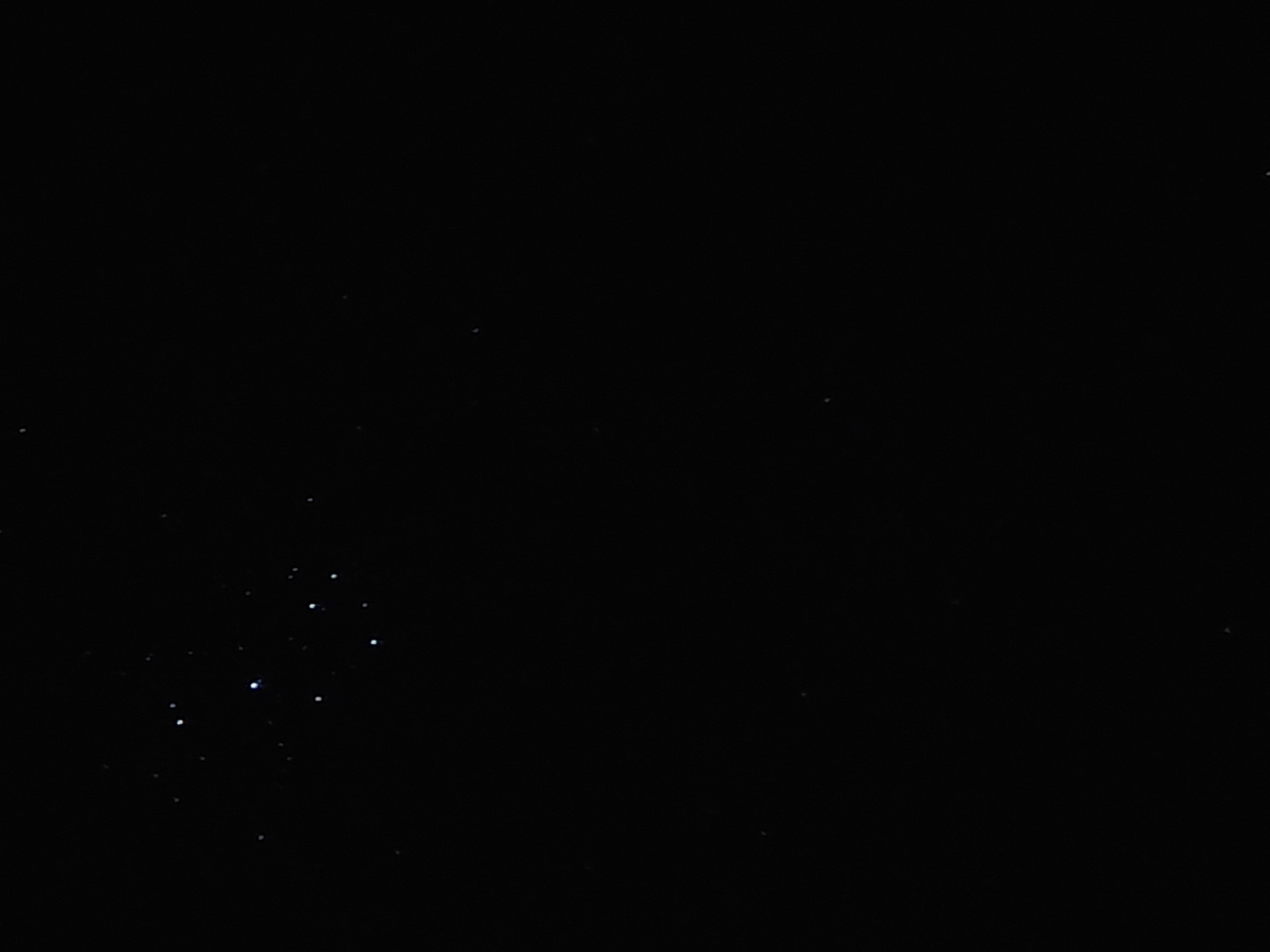
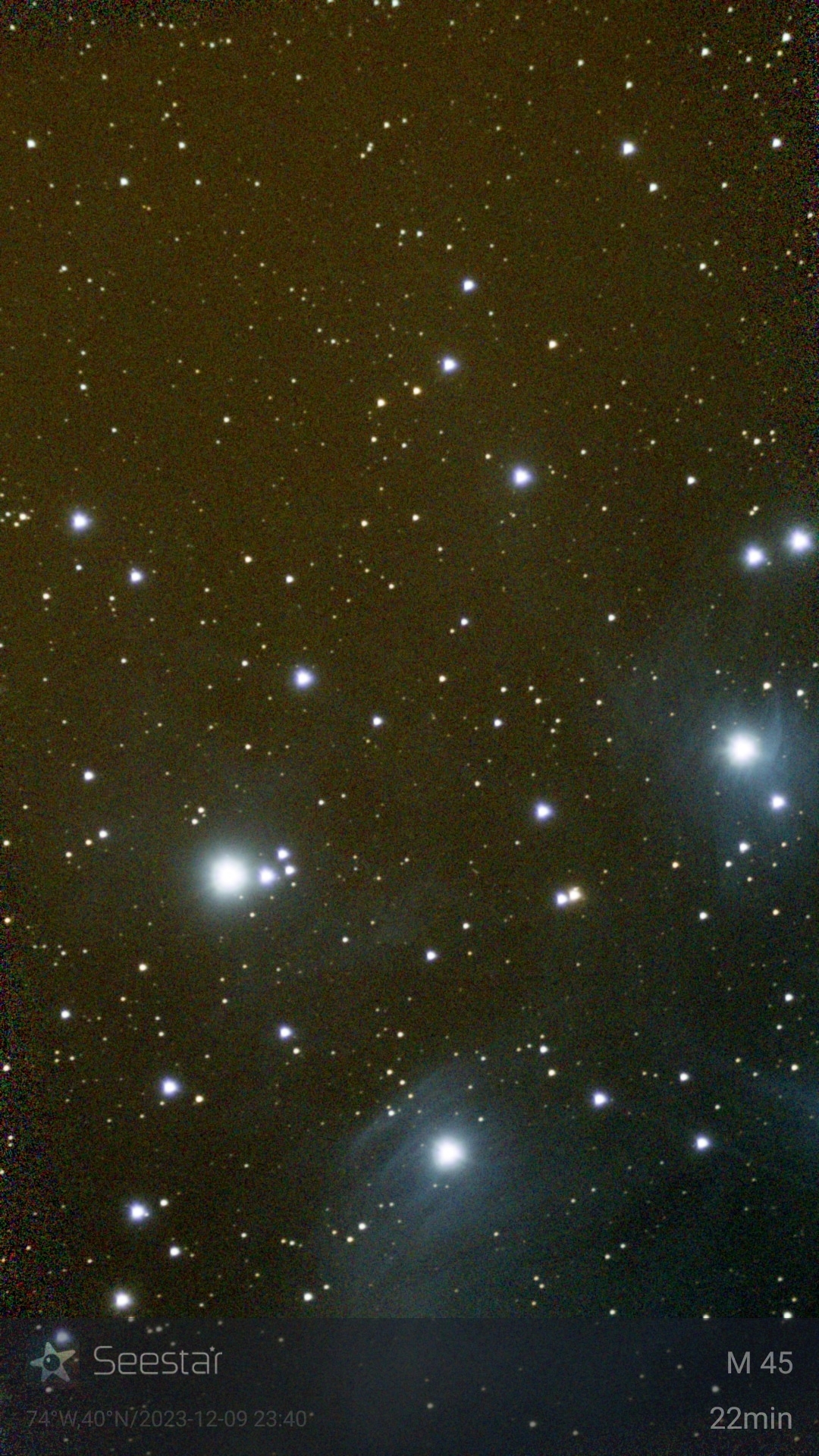
Due to its optimal position in the late evenings in the northeast, I often love imaging M45 The Pleiades because it could be visible to most people with the naked eye. With my poor eyesight, however, it appears more like a bright smudgy spot in the night sky — rather than seven stars that make up the majestic cluster.
With the OnePlus 12’s main camera pointed to its location, I’m really happy how the 1.3-second exposure in night mode turned out. Despite a few wispy clouds in the sky, along with the light pollution from New York City from the west, I think this capture of M45 with the OnePlus 12 came out spectacular. In fact, I can count seven of the stars that make it up.
What’s interesting about setting the OnePlus 12 to 3x zoom is that it doesn’t switch over to its telephoto camera, but instead keeps it locked on to the 50MP main camera — essentially a digital crop at this point. When I get closer to 14.2x zoom, that’s when the phone switches over to its telephoto camera. I have to admit, this is probably one of the sharpest shots of M45 I’ve captured with a phone. In contrast, the same target with my Seestar S50 draws out the gas emanating from the stars.
Planet: Jupiter
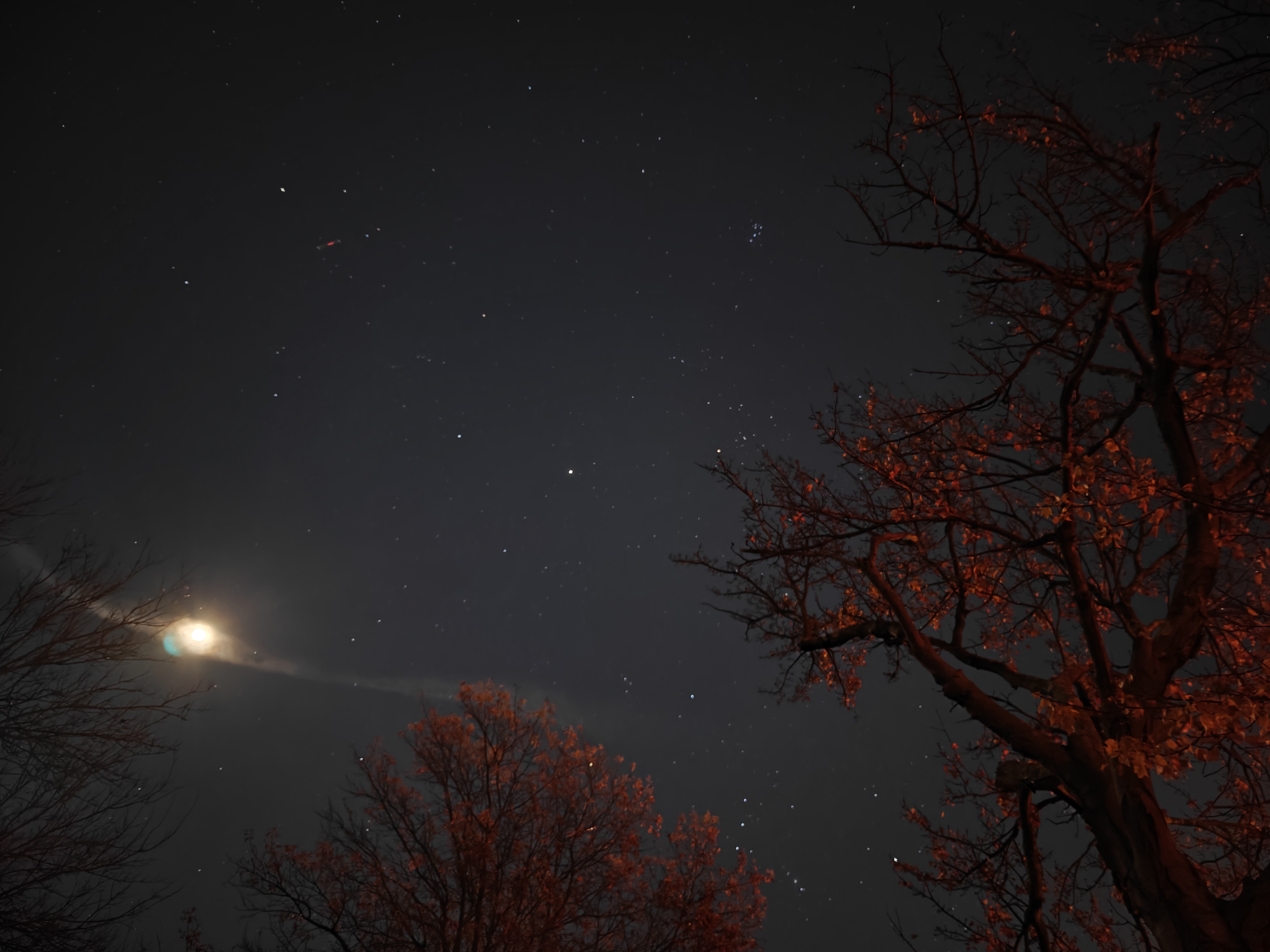
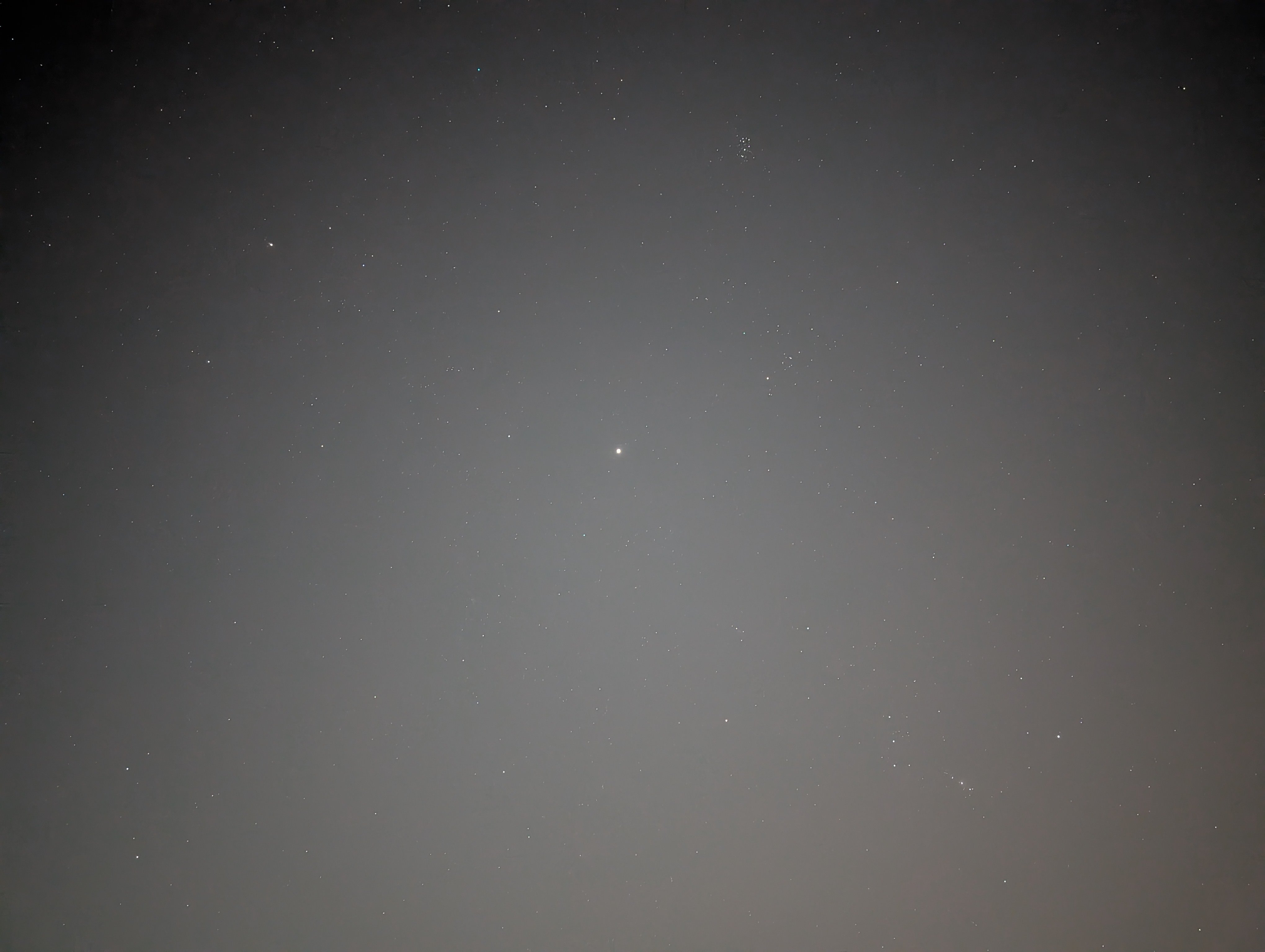
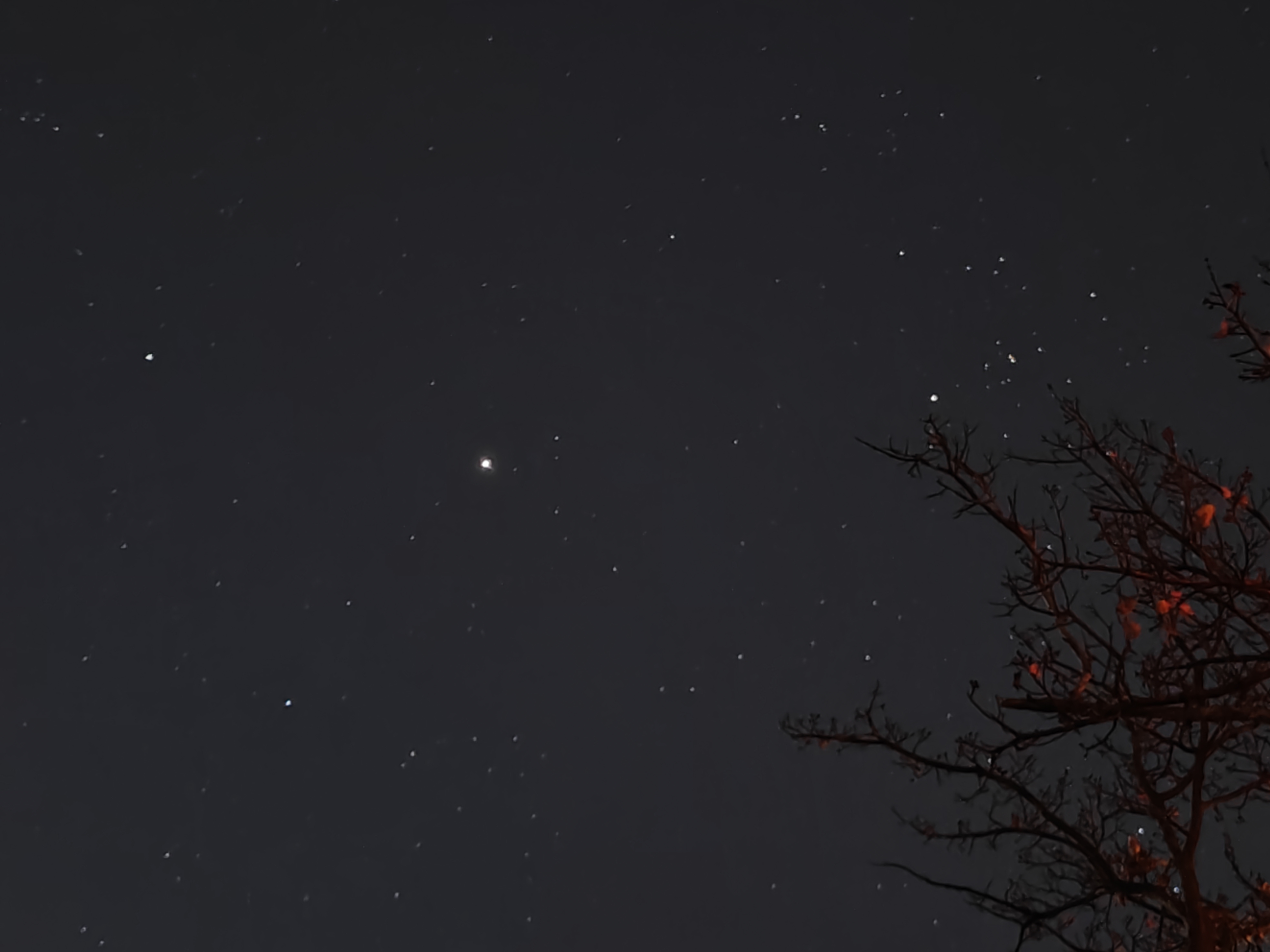
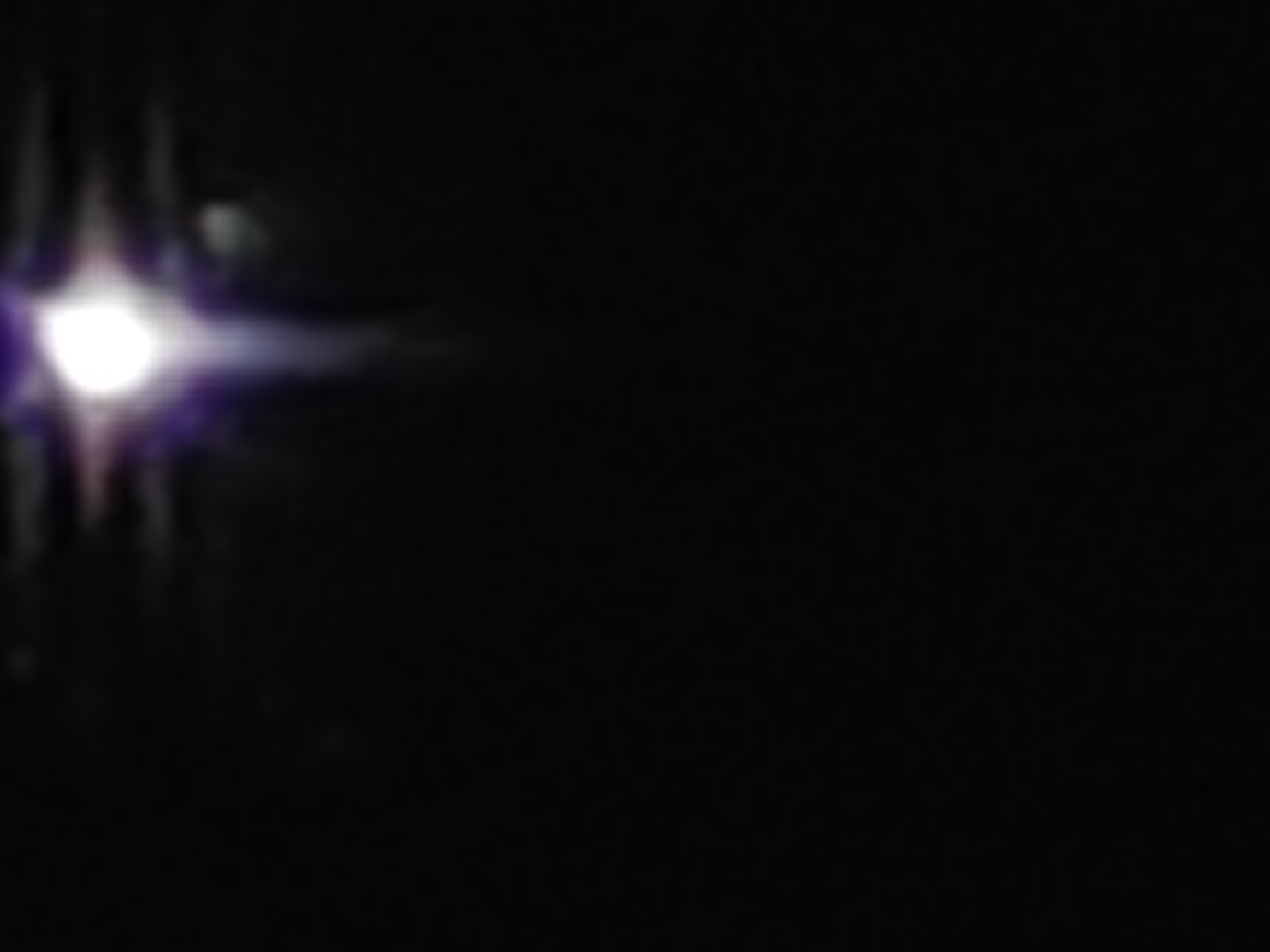
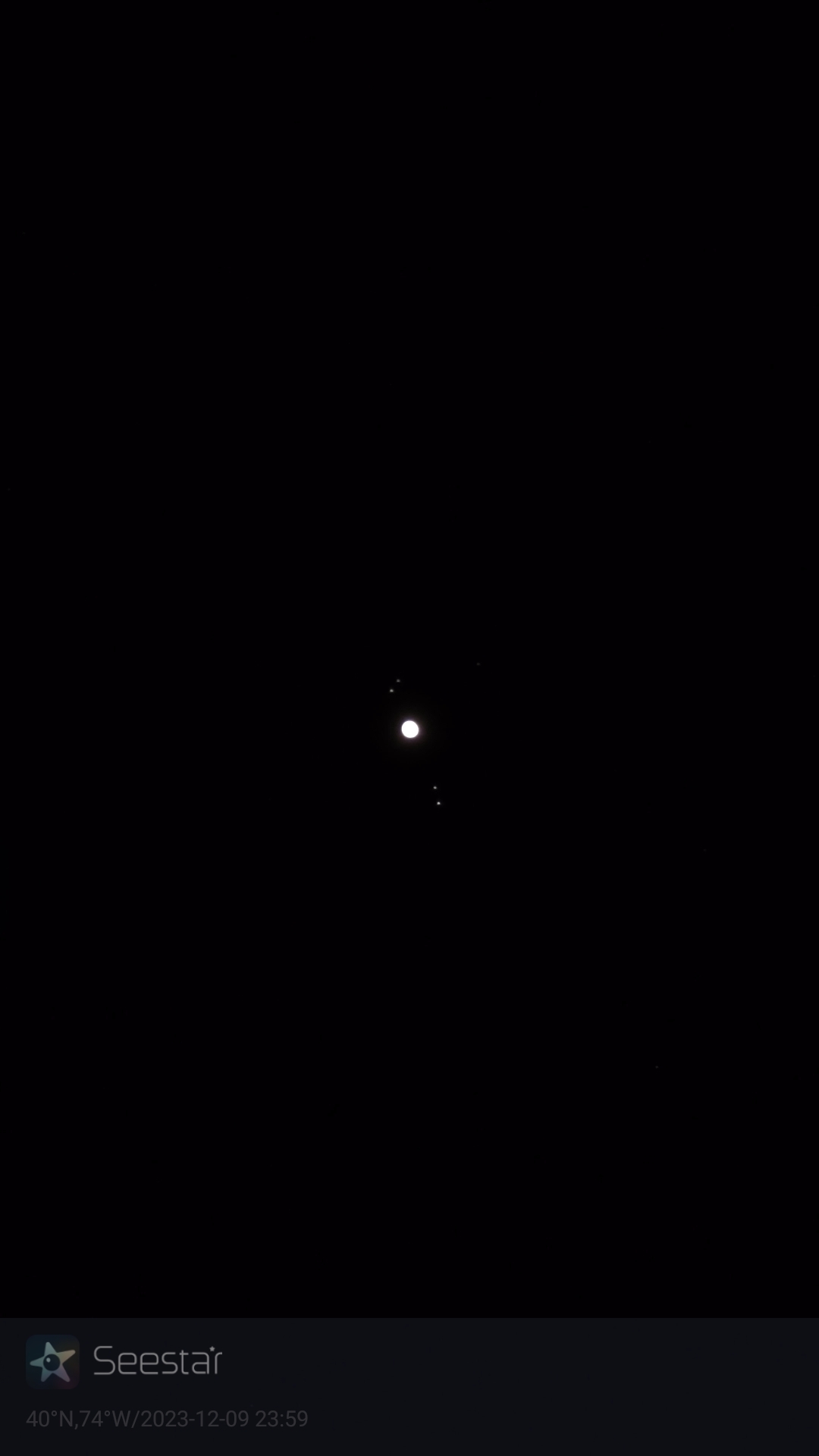
Often mistaken for an extra bright star in the night sky, Jupiter’s an easy target because of its overpowering bright looks. Luckily, it’s not too far from M45 The Pleiades — just to the southwest of it, so I had no trouble pointing the OnePlus 12 at it.
It’s not a terrible shot of Jupiter, but I suspect that the Moon’s brighter glow impacted the image. Jupiter’s visible in the middle of the photo, but it’s not as sharp as I’d like it to be despite trying multiple times tapping the screen to adjust the focus. At 3x zoom, the OnePlus 12 again defaults to the main camera and applies nothing more than a crop.
However, the OnePlus 12 manages to switch over to its proper telephoto camera at 6x zoom, which hones in on the details of Jupiter better. It’s hard to say if it’s just a lens flare, but at 120x zoom, it almost looks like the OnePlus 12 captured some of Jupiter’s moons. Then again, I can make them clearly with my Seestar S50.
Galaxy: M31 Andromeda Galaxy
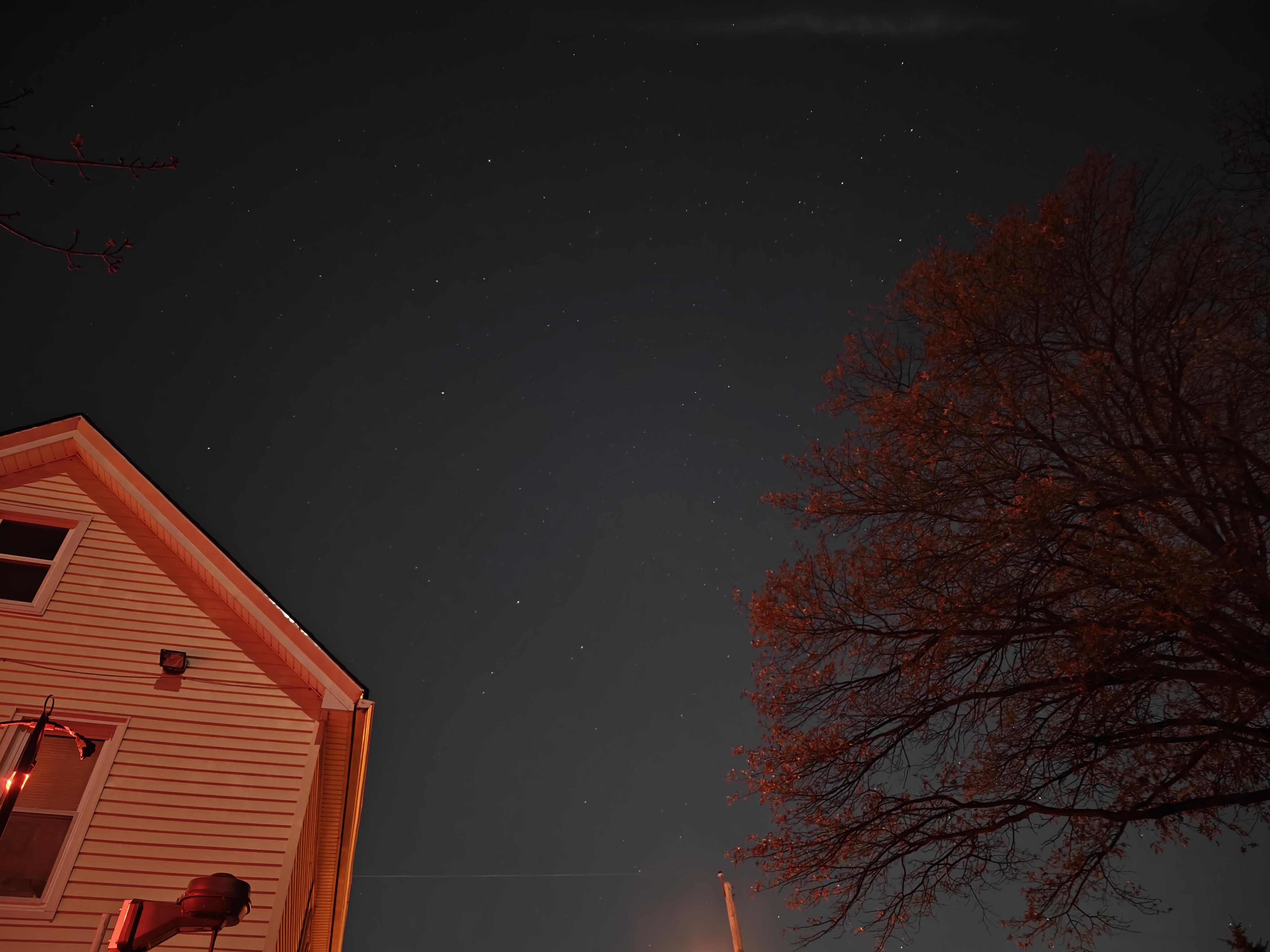
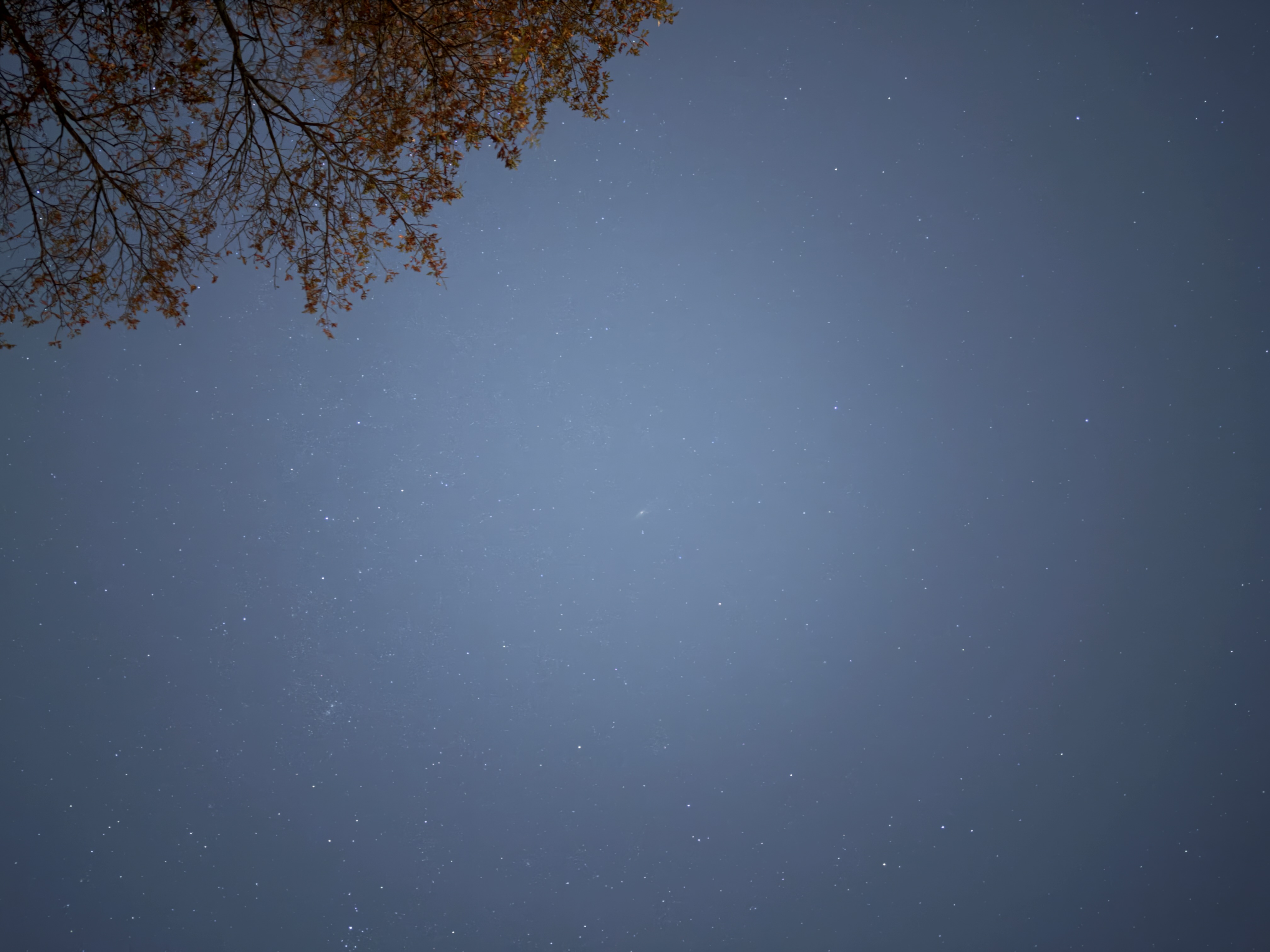
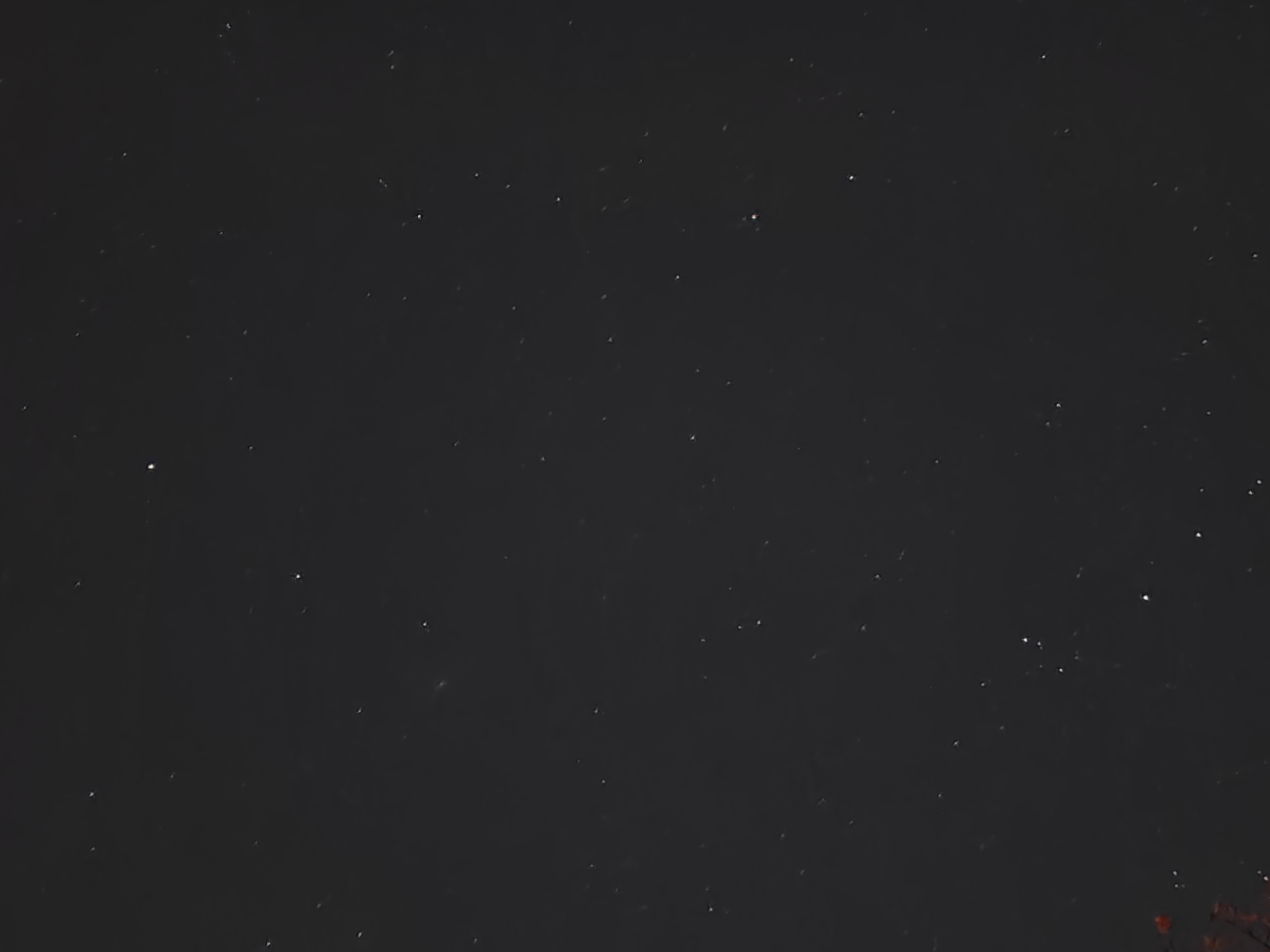
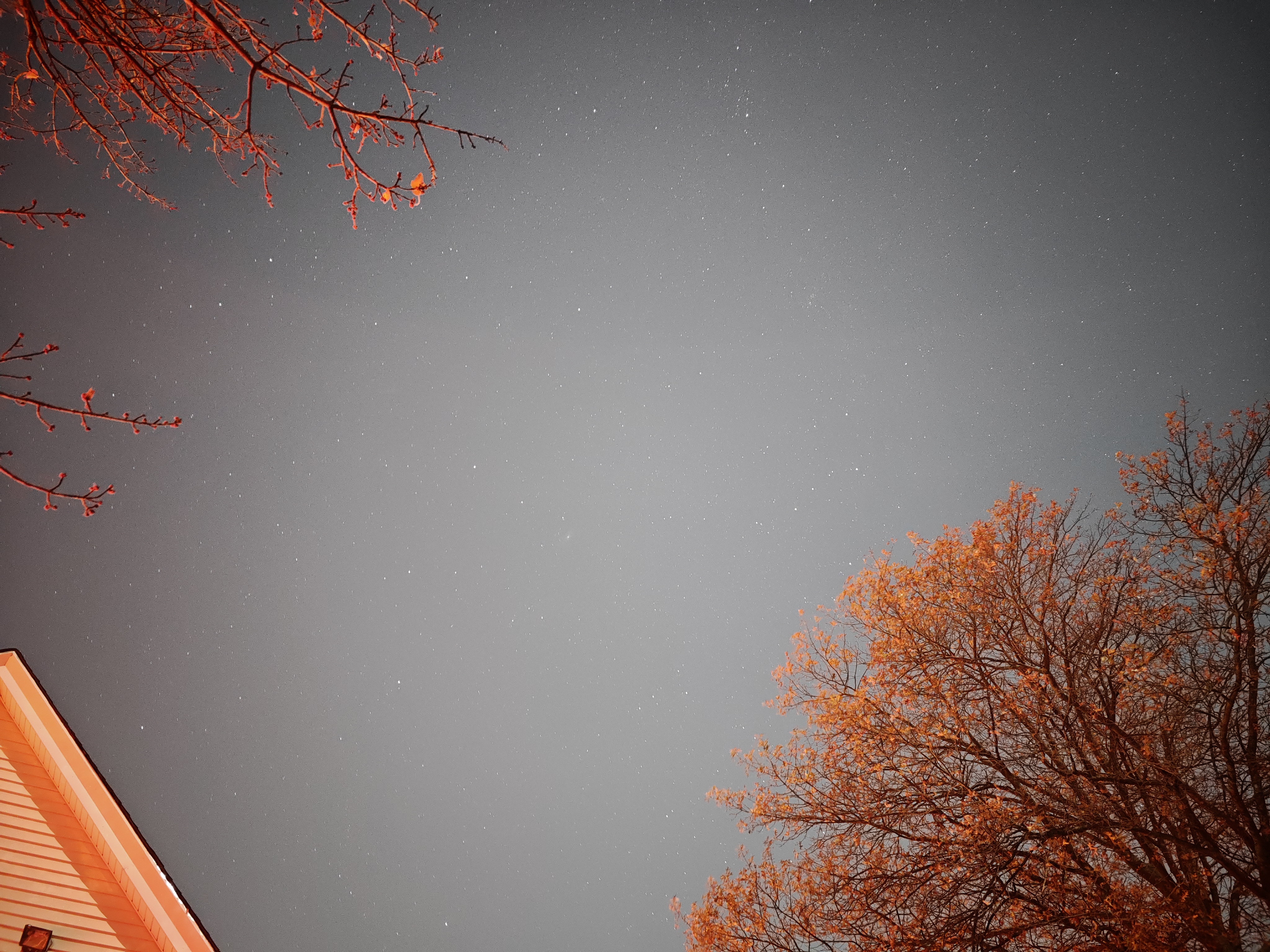
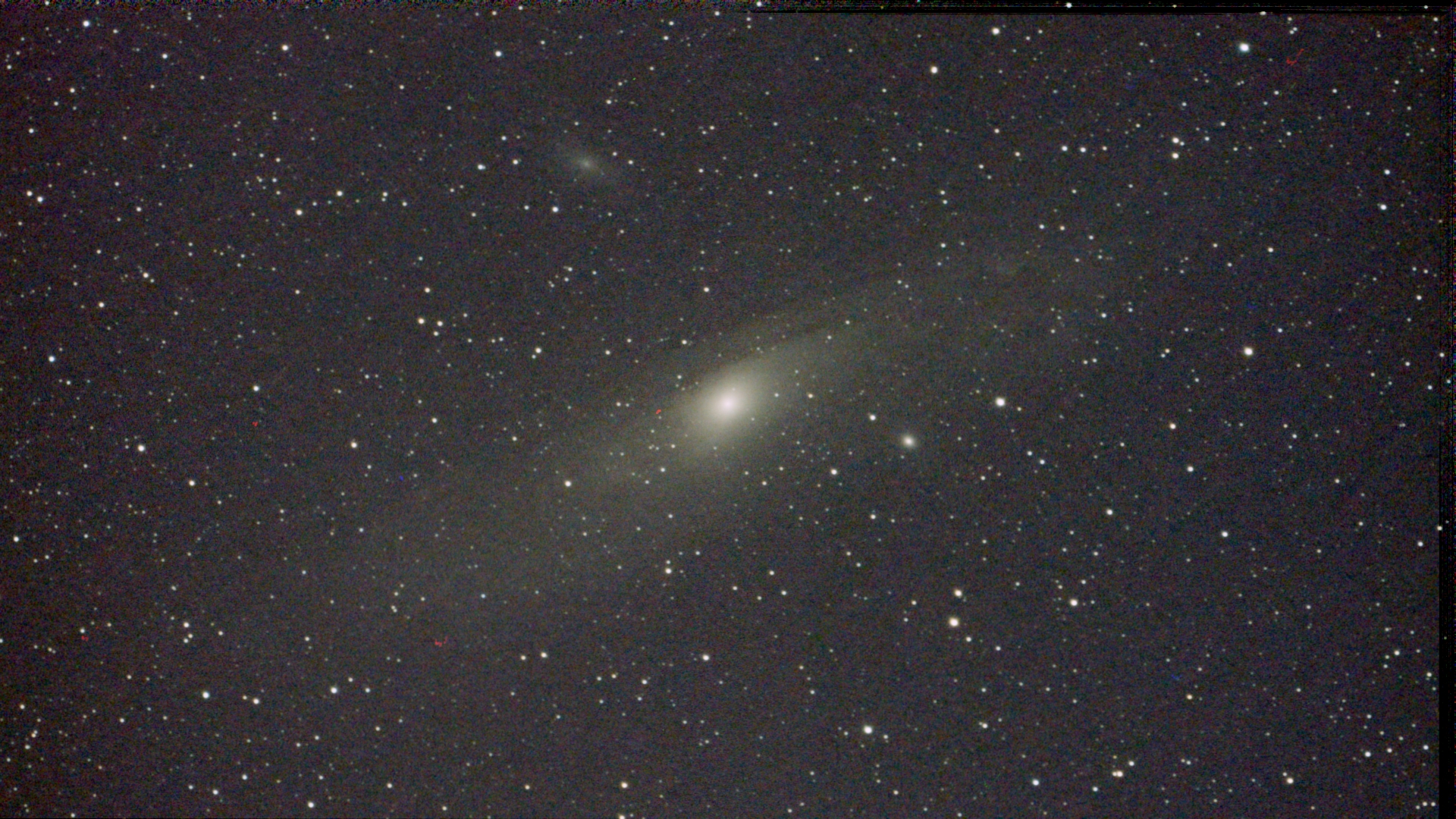
Galaxies are tougher to make out with most smartphones because many of them are farther away. Even with the largest galaxy in the night sky, M31 the Andromeda Galaxy, the light pollution and misty conditions make it hard for me to capture with the OnePlus 12.
It’s position in the sky is very close to the apex, which you’d think would be less affected by New York’s light pollution, but this one’s tough for the OnePlus 12. My shot of M31 at 1x zoom with the OnePlus 12 is almost hard to see, but Andromeda’s faint view is near the top of the photo — just slightly below the trip of bright stars. You can see it a little better at 3x zoom, but the problem with this is that it doesn’t expose the spiral formation that the galaxy is known for.
I had a tough time finding M31 at beyond 3x zoom, so I opted to capture M31 using the OnePlus 12’s dedicated pro mode with a shutter speed of 30 seconds. The faint swirl is slightly more distinguishable, but nowhere to the degree of what my Dwarf II smart telescope captures.
Nebula: M42 The Great Orion Nebula
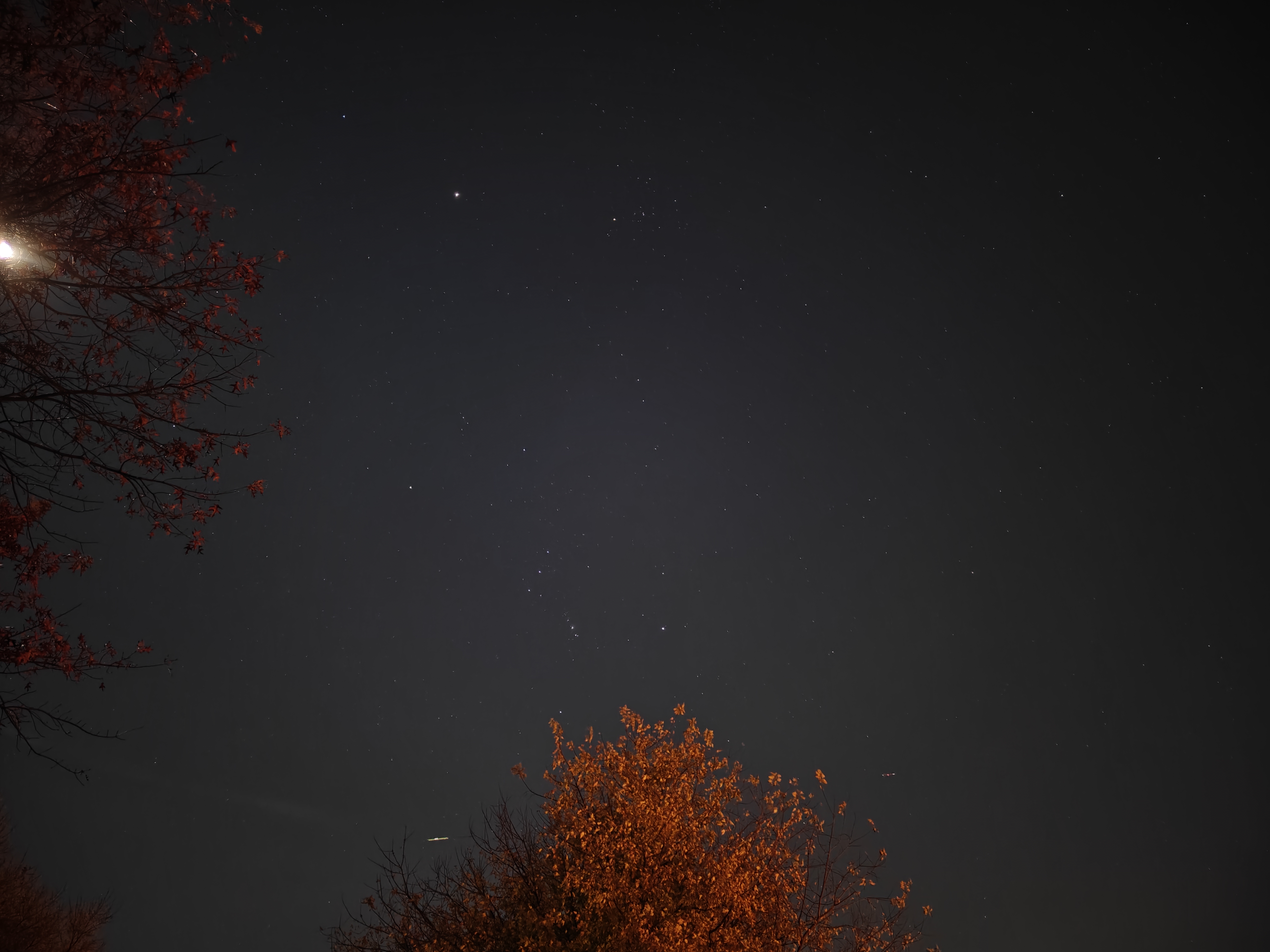
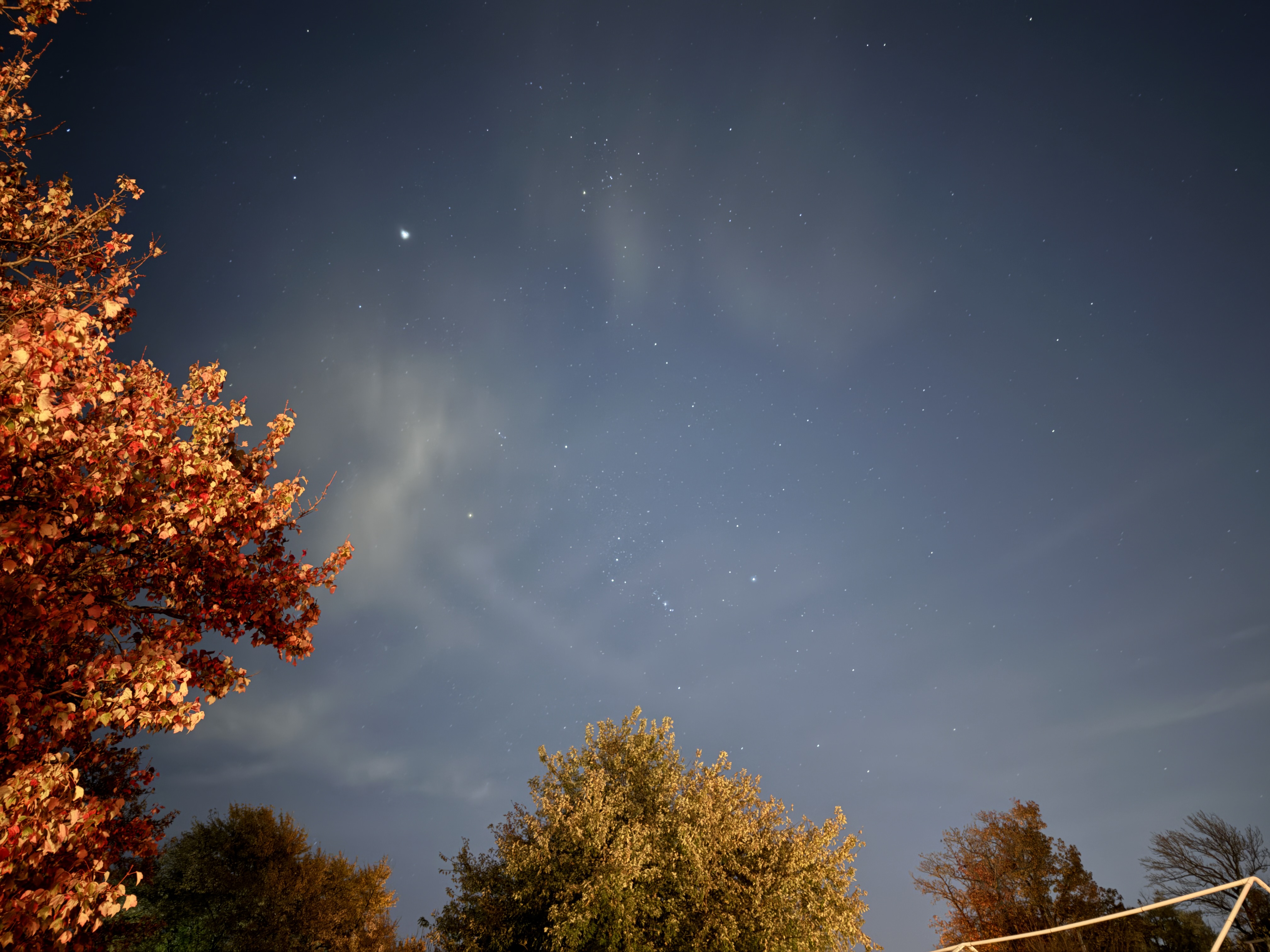
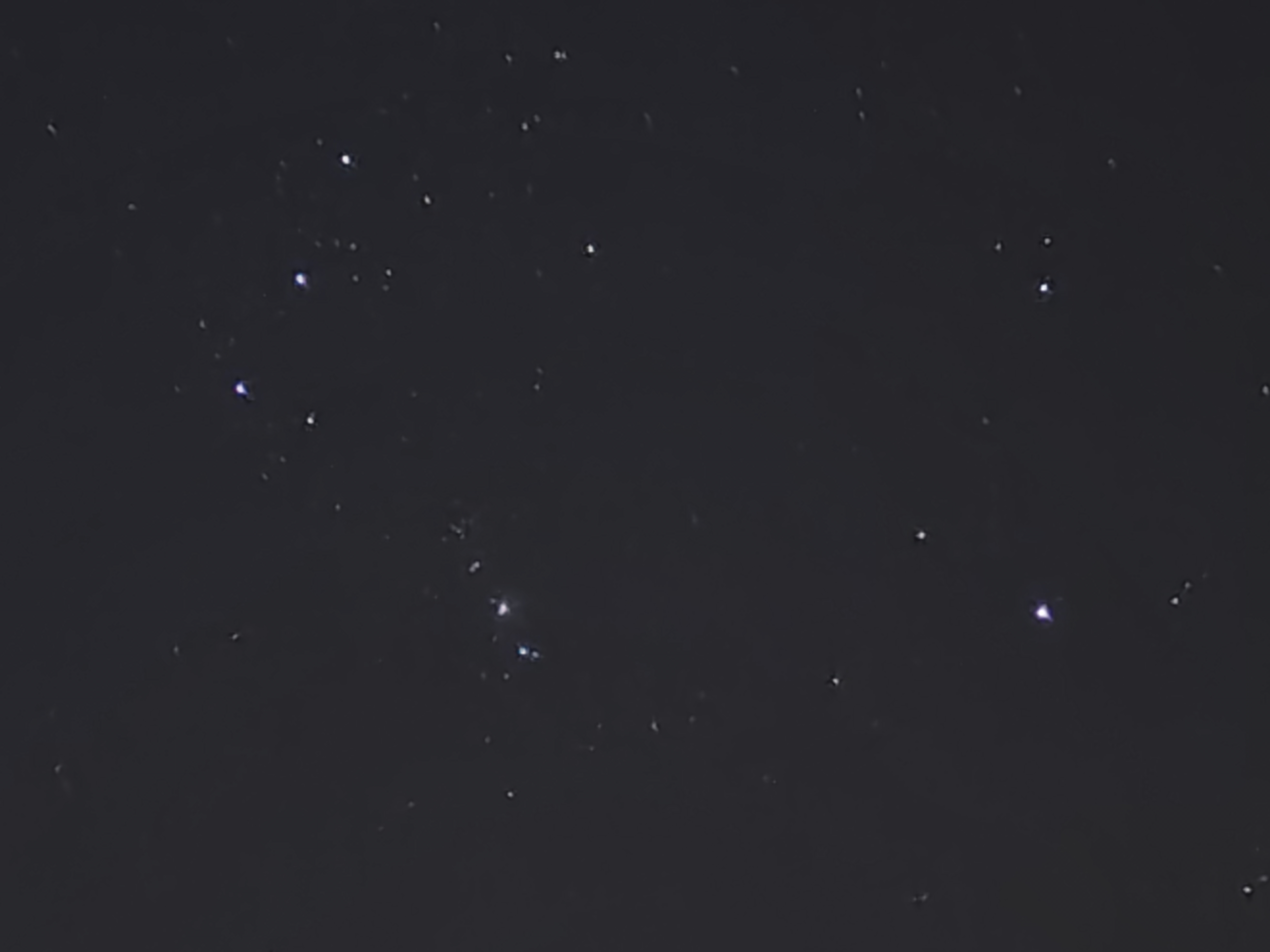
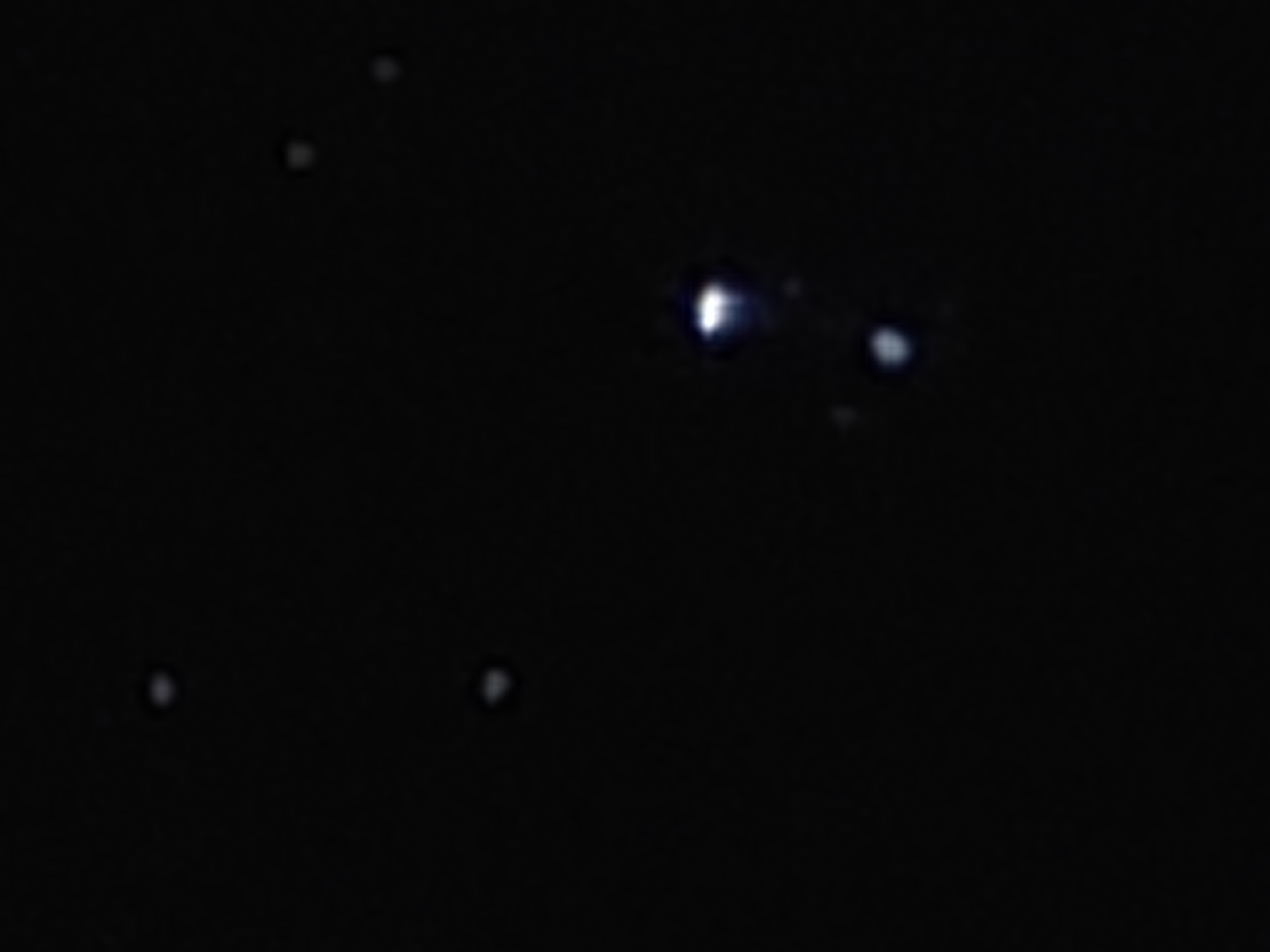
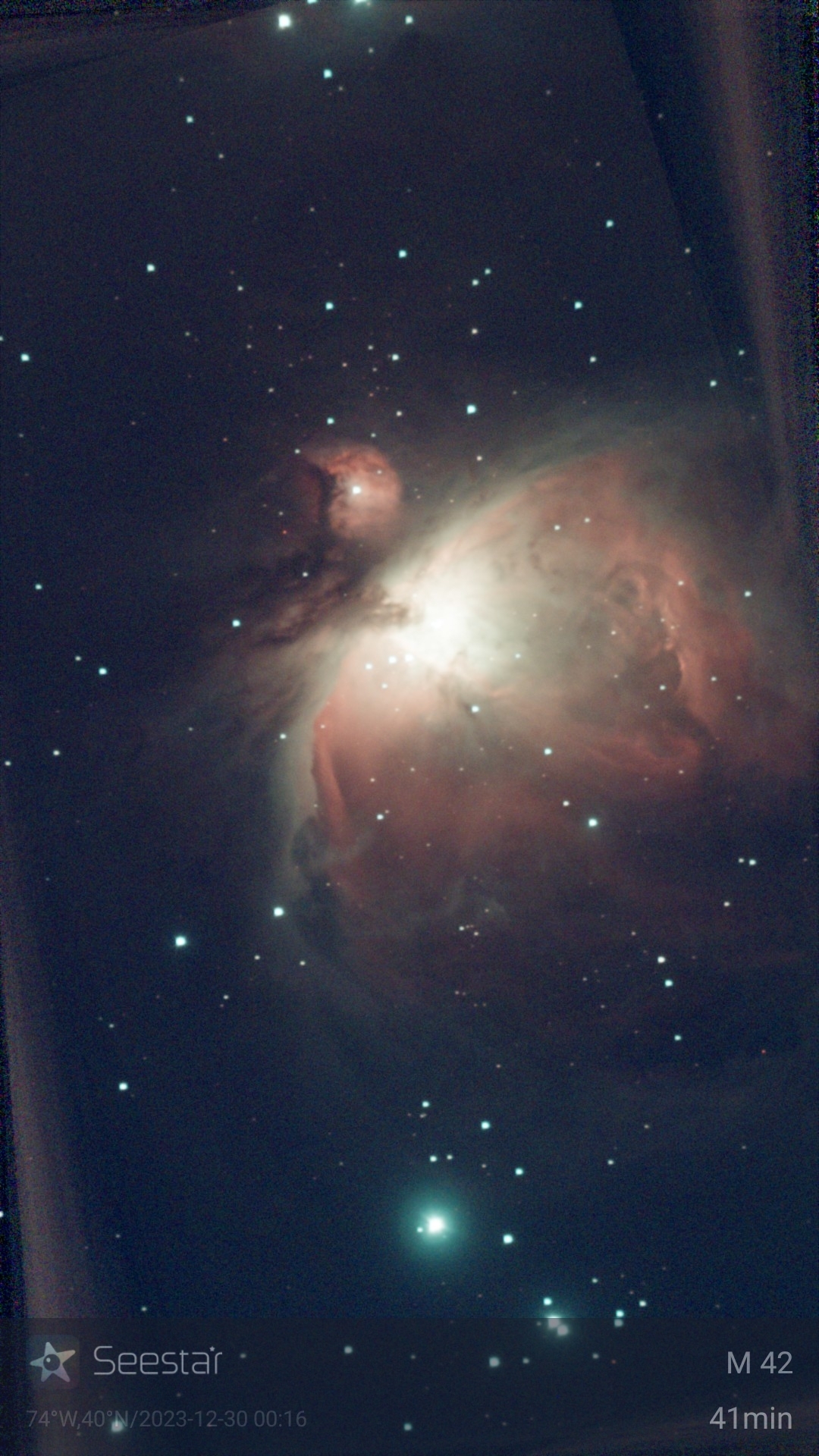
And finally, this wouldn’t be a proper astrophotography session without my favorite target — M42 The Great Orion Nebula. Farther south from Jupiter, the three stars that make up Orion’s Belt are easy to find in the sky. But nearby to the southeast of it is M42.
Amazingly, the OnePlus 12 captures the majestic glow of this nebula that’s 1,344 light years away from Earth. That’s because I can clearly make out the nebula at 1x zoom image. It’s a good shot, but I think the iPhone 16 Pro Max does better with this.
Again the OnePlus 12 sticks to the main camera with the 3x zoom shot, but I think it puts up a decent shot at 86x zoom as well with the telephoto camera. Sure, it doesn’t expose the gas surrounding the star cluster at the heart of the nebula like how the Seestar S50 does it, but at least it captures that brighter core.
Bottom line: Surprisingly better than expected astrophotography
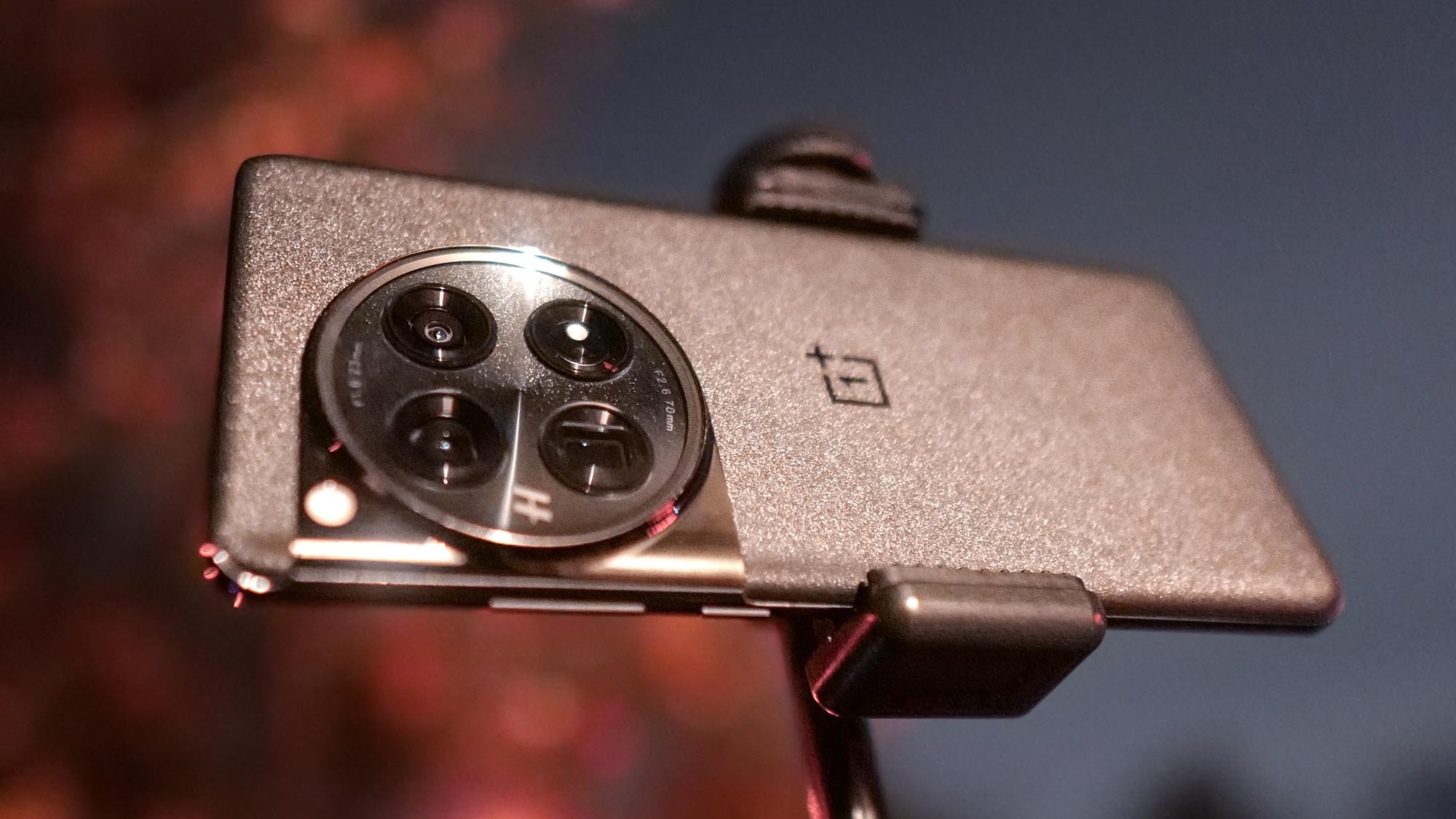
I know very well that the OnePlus 12 trails its main rivals when it comes to low light photography. However, that doesn’t seem to be a handicap for astrophotography because I like most of the results I got.
Most notably, I’m shocked by how well the OnePlus 12 captures M45 The Pleiades — particularly with the zoom shots that clearly define the stars that make up the cluster. It also does nicely to capture M42 The Great Orion Nebula with its main camera. Perhaps its strong performance could be attributed to the clearer sky, but I wouldn’t mind using the OnePlus 12 to capture more deep space objects this fall and winter.
What’s even more impressive in my opinion is how the OnePlus 12 doesn’t require as long of an exposure with its main camera, seeing that other phones easily require about 6 seconds.
More from Tom's Guide

John’s a senior editor covering phones for Tom’s Guide. He’s no stranger in this area having covered mobile phones and gadgets since 2008 when he started his career. On top of his editor duties, he’s a seasoned videographer being in front and behind the camera producing YouTube videos. Previously, he held editor roles with PhoneArena, Android Authority, Digital Trends, and SPY. Outside of tech, he enjoys producing mini documentaries and fun social clips for small businesses, enjoying the beach life at the Jersey Shore, and recently becoming a first time homeowner.
